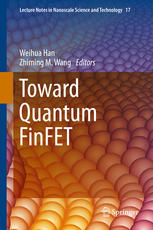

Most ebook files are in PDF format, so you can easily read them using various software such as Foxit Reader or directly on the Google Chrome browser.
Some ebook files are released by publishers in other formats such as .awz, .mobi, .epub, .fb2, etc. You may need to install specific software to read these formats on mobile/PC, such as Calibre.
Please read the tutorial at this link: https://ebookbell.com/faq
We offer FREE conversion to the popular formats you request; however, this may take some time. Therefore, right after payment, please email us, and we will try to provide the service as quickly as possible.
For some exceptional file formats or broken links (if any), please refrain from opening any disputes. Instead, email us first, and we will try to assist within a maximum of 6 hours.
EbookBell Team

0.0
0 reviewsThis book reviews a range of quantum phenomena in novel nanoscale transistors called FinFETs, including quantized conductance of 1D transport, single electron effect, tunneling transport, etc. The goal is to create a fundamental bridge between quantum FinFET and nanotechnology to stimulate readers' interest in developing new types of semiconductor technology. Although the rapid development of micro-nano fabrication is driving the MOSFET downscaling trend that is evolving from planar channel to nonplanar FinFET, silicon-based CMOS technology is expected to face fundamental limits in the near future. Therefore, new types of nanoscale devices are being investigated aggressively to take advantage of the quantum effect in carrier transport. The quantum confinement effect of FinFET at room temperatures was reported following the breakthrough to sub-10nm scale technology in silicon nanowires. With chapters written by leading scientists throughout the world, Toward Quantum FinFET provides a comprehensive introduction to the field as well as a platform for knowledge sharing and dissemination of the latest advances. As a roadmap to guide further research in an area of increasing importance for the future development of materials science, nanofabrication technology, and nano-electronic devices, the book can be recommended for Physics, Electrical Engineering, and Materials Science departments, and as a reference on micro-nano electronic science and device design.